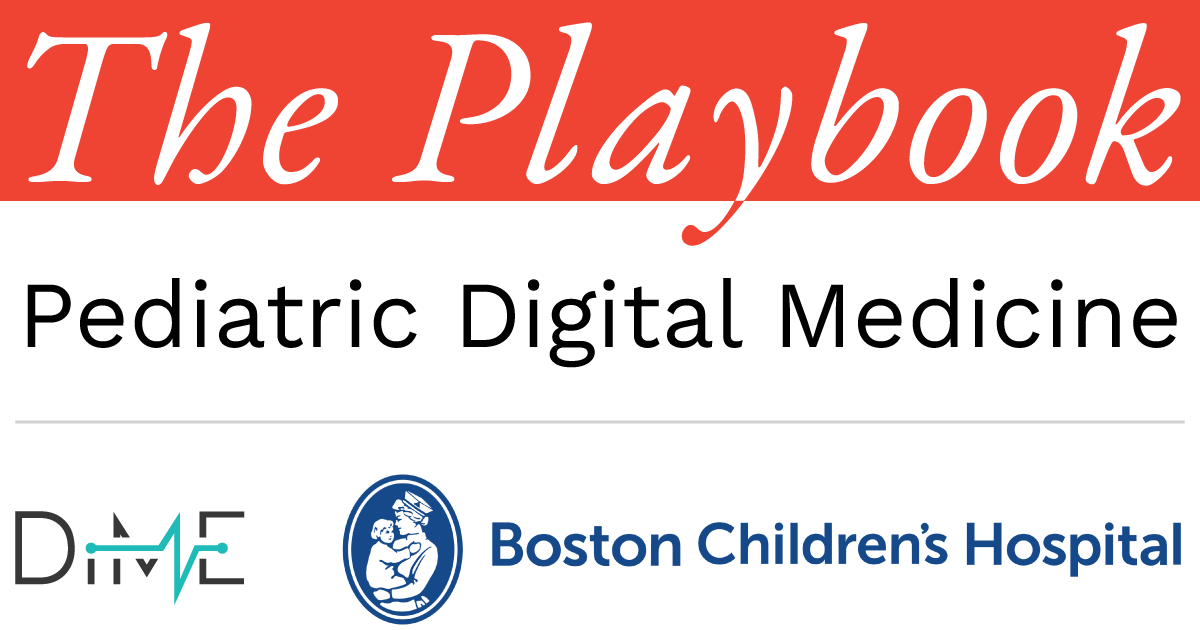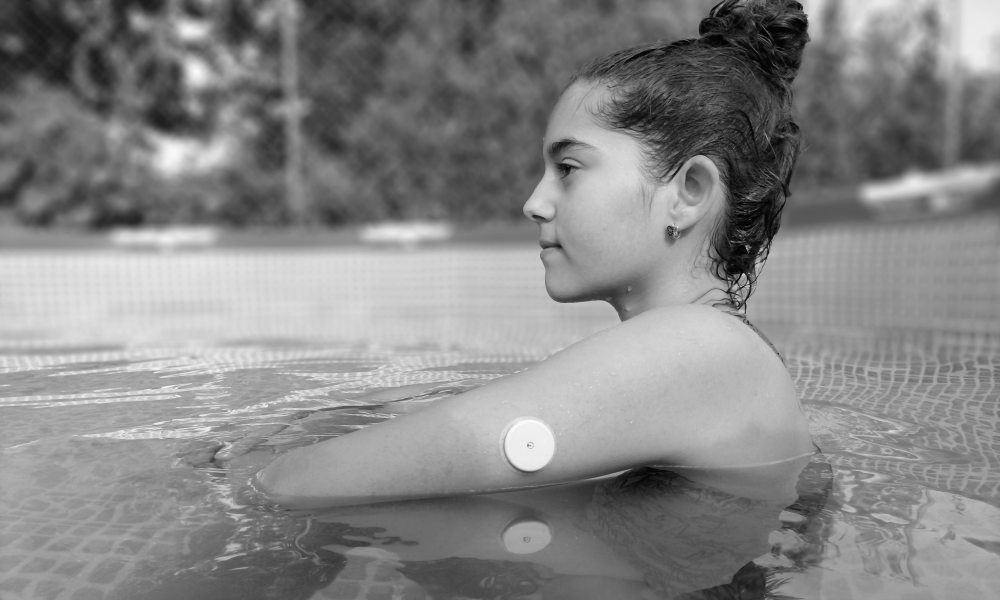
Chapter 1 – Section 4
Strategies for sustainable pediatric digital health innovation

This section focuses on leveraging tools like wearables, telehealth, and AI-driven solutions to address key needs. Use it to build proactive intervention strategies in areas such as preventative care, chronic disease management, and mental health.
Preventative care and early detection
Wearables, mobile health apps, and AI-driven solutions can help identify early warning signs of health issues, such as developmental delays, obesity, or hearing and vision problems. Proactive interventions can mitigate long-term health risks and decrease the need for more intensive, costly treatments later in life.

- Monitoring and diagnostic: Develop wearables and apps that provide continuous health monitoring for conditions like developmental disorders, offering personalized recommendations for early interventions.
- Collaboration with payors: Collaborate with payors, especially Medicaid, to demonstrate the long-term savings of preventive digital health solutions. This collaboration can lead to coverage for preventative care tools, which is vital for adoption.
- Schools and community settings: Public schools in the U.S. hold regular hearing, vision, and scoliosis screenings. Consider how a DHT may fit into an analogous framework for early detection.
Chronic disease management
Chronic diseases, such as asthma, diabetes, and cardiovascular conditions, remain prevalent among pediatric populations. Digital health solutions like remote monitoring, digital therapeutics, and mobile health apps can vastly improve disease management and treatment adherence for these conditions. Early diagnosis and continuous management can prevent complications and reduce long-term healthcare costs.

- Integrate platforms: Build platforms that integrate telemedicine, remote monitoring, and digital therapeutics to provide holistic care for children with chronic conditions.
- Build partnerships: Given Medicaid’s role as the largest insurer of children, partnering with the program to offer reimbursable solutions for chronic disease management will be important to scale.
Learn more in our Medicaid guide.

Meet Amir
Personas illustrate key points in action, showcasing real-world applications and practical scenarios based on fictional personas.
Mental and behavioral health
Children today face unprecedented mental health challenges. DHTs—particularly mobile apps, teletherapy, and digital therapeutics (DTx)—are well-positioned to meet this demand. These tools offer scalable, accessible solutions that can reach children in underserved or remote areas, addressing a major gap in pediatric mental healthcare.

- Teletherapy platforms tailored specifically for pediatric mental health can expand access to care. Consider collaborating with school systems or community organizations to embed digital mental health tools where children spend much of their time.
- Monitoring: Develop apps and digital tools that allow patients and caregivers to track behavioral patterns and flag early signs of mental health issues for timely intervention.
- Partnerships: Partner with Medicaid and school-based health programs to provide teletherapy or behavioral health apps as part of a covered benefit.
Digital Therapeutics (DTx):
Evidence-based therapeutic interventions delivered through software programs to prevent, manage, or treat medical conditions. Typically used independently or alongside medications, devices, or other therapies. Can offer personalized and accessible healthcare solutions. Key characteristics include their ability to deliver measurable clinical outcomes and their integration with clinical practice to support patient care.

Key insights
The U.S. Surgeon General’s youth mental health advisory & what you can do about it
The Surgeon General’s advisory highlights the urgent need to address youth mental health challenges, emphasizing systemic efforts across funders, foundations, employers, communities, institutions, and governments. It calls on these groups to play a pivotal role in creating supportive environments, funding mental health programs, and reducing stigma.
Recommendations for funders and payors:
- Fund evidence-based youth mental health programs to expand access to care.
- Support initiatives that address mental health disparities and promote equity.
- Provide workplaces with mental health training and resources for employees with caregiving responsibilities.
- Invest in mental health prevention strategies targeting youth.
- Collaborate with schools and community organizations to enhance youth support systems.
The medically underserved and populations with health disparities
Low-income and rural populations are often underserved in pediatric healthcare, but they represent a large market covered by Medicaid. Digital health solutions that address disparities in access, such as telemedicine and low-cost mobile apps, can make a significant impact on health outcomes in these communities.

- Cost-efficiency: Develop digital health tools specifically tailored for low-income families that are affordable, accessible, and culturally relevant.
- Partnerships: Partner with schools, community health centers, and local organizations to expand access to digital health resources for children who might not otherwise receive care.

Meet Maya
Personas illustrate key points in action, showcasing real-world applications and practical scenarios based on fictional personas.
DTx and personalized medicine
The rise of DTx and personalized medicine offers a huge growth opportunity in pediatric care. DTx can target conditions like ADHD, asthma, or depression with interventions that complement or even replace traditional treatment methods. The shift toward personalized medicine, where treatments are tailored to a child’s data, opens new avenues for precision care.

- Clinical validation: Focus on building strong clinical evidence to validate DTx solutions, and establish partnerships with pediatric hospitals, research institutions, and payors to facilitate adoption.
- Reimbursement: Prioritize securing reimbursement for DTx under Medicaid and private payors by demonstrating the cost-effectiveness of these solutions in managing pediatric conditions.
Digital endpoints in clinical trials
The use of digital endpoints in clinical trials represents an emerging growth opportunity. Pediatric clinical trials, particularly in areas such as rare diseases or chronic conditions, can benefit from digital tools that measure outcomes more accurately and in real time. This shift can shorten trial timelines and improve the quality of data collected.

- Collaborate with life science and research organizations: Work closely with pharmaceutical and life science companies as well as academic and research institutions to integrate digital endpoints into pediatric trials.
- Engage with regulators: Engage with regulators to establish clear guidelines for the use of digital endpoints in pediatric trials, which will help accelerate their acceptance and use in real-world settings.
Learn more in our microplaybook on DHTs in clinical investigations
Clinical Trial / Investigation / Study:
An investigation or research that involves one or more human subjects, undertaken to assess/evaluate the safety or effectiveness of a medical device.

Meet Parker
Personas illustrate key points in action, showcasing real-world applications and practical scenarios based on fictional personas.

Meet Amir
Amir is a 10-year-old African American boy living in a low-income neighborhood in New York City. He has struggled with asthma since he was 7, often experiencing flare-ups triggered by environmental factors such as mold and dust in his small apartment. His mother, Tasha, and father, Bryce, both work full-time and frequently miss signs of Amir’s worsening condition, leading to many unplanned hospital visits, missed school days for Amir, and missed workdays for Tasha and Bryce.
Now, Amir’s pediatrician has introduced a smart inhaler connected to a remote monitoring platform. This inhaler tracks his usage and provides real-time data on his condition, which is shared with Tasha and Bryce and Amir’s healthcare provider. Since adopting this DHT, Amir’s asthma has become much more manageable, significantly reducing emergency room visits and improving his overall quality of life.
Consider alternate avenues of funding
Aside from venture capital and private equity, other, non-dilutive grants and funding opportunities exist that help drive pediatric innovation. Some of them include:
Small Business Innovation Research/Small Business Technology Transfer (SBIR/STTR) Programs: U.S. government programs that provide funding for small businesses to engage in federal R&D that has the potential for commercialization. This funding is particularly relevant to digital health startups.
Pediatric Device Consortia (PDC) Grant Program: Sponsored by the FDA, this program provides support and guidance to foster pediatric medical device innovation. The awards include commitments to improving clinical trial infrastructure and advancing diversity and health equity, as well as real-world evidence projects.
National Institutes of Health/National Institute of Child Health and Human Development (NIH/NICHD): Grants aimed at health technology development for pediatric populations.
Private Foundations and Nonprofits: Organizations like the Bill & Melinda Gates Foundation or the Robert Wood Johnson Foundation offer grants for pediatric healthcare initiatives.
Incubators or Accelerators. Many incubators or accelerators provide funding, resources, and mentorship in exchange for a small equity stake or other agreements. Some specialize in health tech, like Rock Health and KidsX.

Pro tips
Sustainable strategies from The Playbook team
DHTs can unlock potential to improve patient lives in various ways.
Preventative Care
- Leverage wearables and apps for early detection of risks like developmental delays and obesity.
- Integrate tools into school and community health screenings for scalable early interventions.
Chronic disease management
- Develop platforms combining telemedicine, remote monitoring, and therapeutics for seamless care.
- Partner with payors like Medicaid to ensure reimbursement and broader access.
Mental health solutions
- Deploy teletherapy platforms and behavior-tracking apps to improve access and early intervention.
- Collaborate with schools and community programs to embed mental health tools.
Equity and accessibility
- Create affordable, culturally relevant solutions for underserved populations.
- Expand access through school-based health centers, community organizations, and consumer organizations (like Lego) to optimize your approach and reach your intended audience.
Modernize clinical trials
- Integrate digital endpoints to improve pediatric trial efficiency and data quality.
Funding innovation
- Pursue grants like SBIR/STTR and FDA programs to support R&D.
- Partner with accelerators like KidsX for mentorship and scaling opportunities.
Case studies


Key takeaways
Charting the path to sustainable growth and impact
The road to sustainable growth and meaningful impact in pediatric digital health requires a careful blend of strategic thinking, stakeholder collaboration, and evidence-driven innovation. As we look ahead, key considerations and strategies from The Playbook team emphasize:

Addressing real-world healthcare needs: The focus must remain on solutions that align directly with the pressing health challenges of children today, particularly chronic diseases that affect long-term health outcomes.

Engaging key stakeholders early and often: Clinicians, patients and caregivers, regulators, and technology partners must be integral to the development process to ensure products are clinically relevant and widely adopted.

Data-driven decision-making: Leverage real-world evidence and clinical data. It is essential not only for optimizing product development but also for driving continuous improvement post-deployment.

Designing for scale and sustainability: Solutions should be designed for scalability, with a focus on cost-effective implementation across diverse settings and regions to maximize global reach.
To achieve sustainable growth, the focus must also include optimized development and deployment strategies, ensuring solutions are continuously refined, scalable, and impactful. Continue reading The Playbook for more recommendations, considerations, and strategies to optimize pediatric DHT development and deployment.










